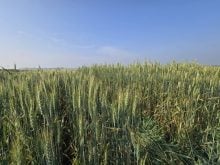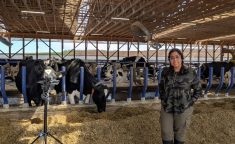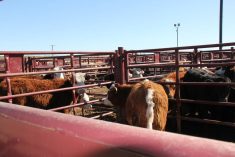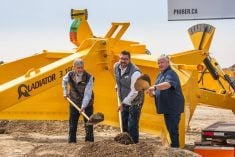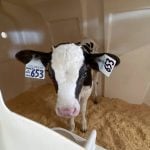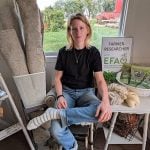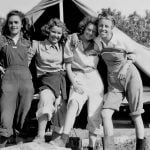Sale barns and livestock transporters remain the main hurdles to a fully functioning beef traceability system, according to Steve Primrose, the chairman of the Canadian Cattle Identification Agency.
“We need to sell a national traceability program because it will open up niche markets,” he told the annual meeting of the Canadian Cattlemen’s Association. “When we have everybody on board, we’ll be ahead of every other country.”
Primrose said he’s aiming to have the full program in operation by 2013.
Read Also
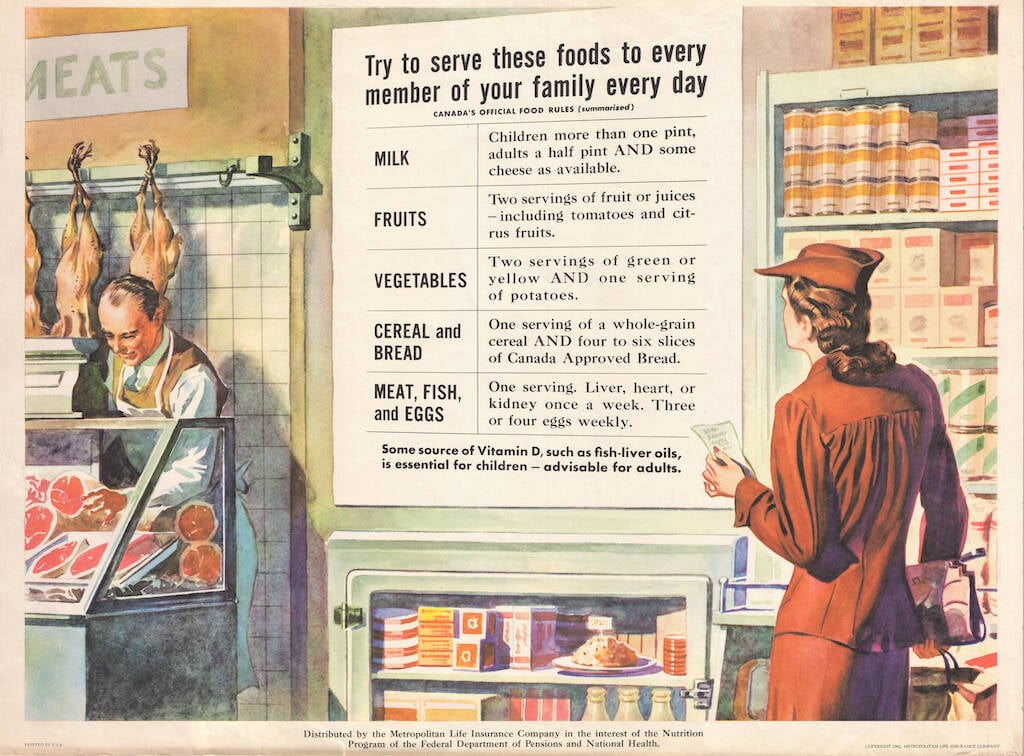
Canada’s ‘Harvest for Victory’ in the Second World War
Propaganda posters celebrating farming show the legacy of Canadian agriculture during the Second World War.
The biggest holdup, he said, has been finalizing a national premise registry system. It should start this fall, using rural lot numbers or GPS co-ordinates.
“Every province had a different idea of what should be listed as a premise. That has delayed us by at least two years.” Among the facilities beef groups want on the premise registry are cow/calf and feeder farms, feedlots, sale barns and slaughter plants.
For Gib Drury, a Quebec cattle producer and chairman of the Canadian Beef Export Federation (CBEF), full traceability can’t come soon enough. “If we can provide it on our animals, then they will sell at a premium on world markets. We can use the system to prove all sorts of attributes as such as grass fed or antibiotic free. But if we don’t have it, we can’t prove the claims.”
Producers are onside, but getting all livestock premises and transporters registered will take time, he said. “About 50 per cent of the premise registration is done across the country but the livestock transportation outfits need infrastructure for reading and reporting tags.”
The simplest way to run the ID system is to record animals when they “move in,” he said in an interview. That includes birth on a farm and arrival at another farm, feedlot or slaughter plant.
His experience in Quebec provides a lot of positives for a full identification system. “When sale barns adopted the technology for recording numbers on eartags, they found the $4,000 cost was back three times over by reducing the complexity of their administration procedures and cost.”
Half the sale barns in the country already have the ability to record tag numbers, he said; the challenge is to get the truckers onside.
Farmers shouldn’t worry that traceability could be used to hold them liable for problems in the food chain unless they are doing something wrong such as abusing antibiotic withdrawal rules, he said. And cattle tags helped in the traceback of BSE-infected cows, but no one blamed the producers for the spread of the disease.
RESISTANCE
The CBEF supports age verification of cattle but has run into resistance from farmers on the Prairies whose cattle calve on pasture. However, international rules on age verification provide adequate flexibility for calves born on pasture and they can be tagged at weaning time, he said.
“If we follow the international standards, then we have another tool for getting into international markets,” he suggested.
There’s no need for provinces to have different requirements for a premises registry, Primrose said, and he hopes that by next year, pastures, sale barns, labs and research facilities will come into the registry system. The following year, livestock carriers should be on it.
“That would put us on a pedestal for international buyers; we’ll be way ahead of everyone else.”
Age verification, he predicts, will soon be a must for exports outside of North America and the U. S. will likely be tied up in legal battles over it for years.
“Traceability isn’t going away,” he said. “If we don’t do it, we’re not going anywhere. We might as well cut our national herd in half.”


